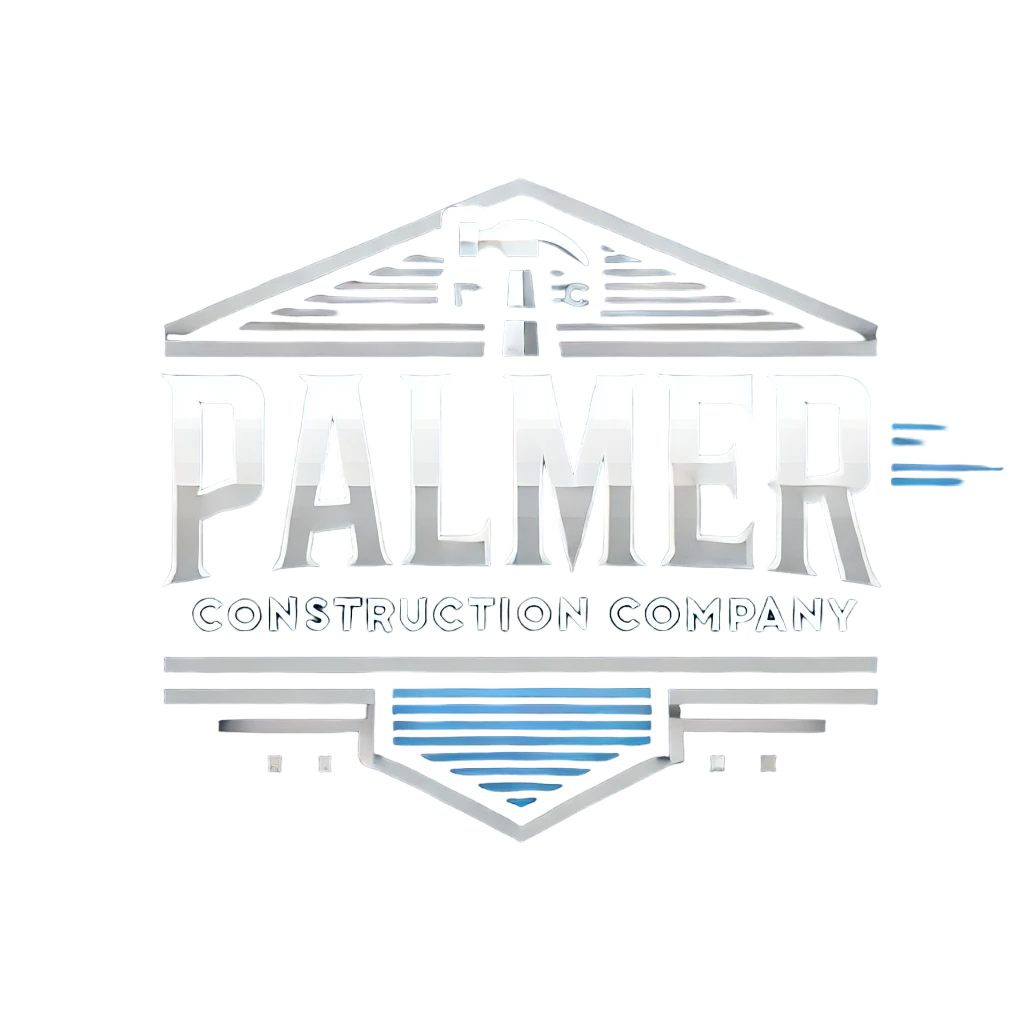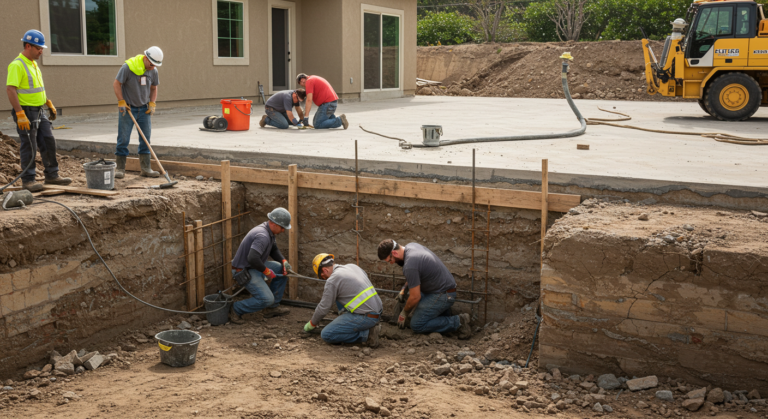Table Of Contents
Achieving LEED Certification in Green Building Projects: A Comprehensive Guide
Key Takeaways
- Summary of LEED Certification and its Overview
- Explanation of Certification Levels within LEED
- Procedures for Obtaining LEED Certification
- Criteria Needed for LEED Certification
- Accumulating Points for LEED Certification
- Frequent Obstacles in Securing LEED Certification
Achieving LEED Certification In Green Building Projects | Overview of LEED Certification
Achieving LEED Certification in Green Building Projects signifies a commitment to sustainability, energy efficiency, and environmentally responsible practices. The LEED certification, administered by the U.S. Green Building Council, creates a framework for identifying and implementing practical and measurable green building solutions. LEED-certified buildings not only enhance environmental quality but also improve the well-being of occupants and reduce operational costs. This green business certification inc. encourages innovation within the construction industry, promoting designs that minimize adverse impacts on the environment. As the demand for sustainable construction continues to rise, achieving LEED certifications becomes essential for architects, builders, and developers aiming to meet the expectations of eco-conscious consumers.
- Focus on sustainable site development and landscaping.
- Prioritize energy efficiency through smart design and technology.
- Incorporate sustainable materials and resources in construction.
- Improve indoor air quality for a healthier living environment.
- Implement water efficiency measures to conserve resources.
- Encourage the use of renewable energy sources whenever possible.
- Regularly monitor and update practices to maintain LEED standards.
Achieving LEED Certification in Green Building Projects | Definition of LEED
LEED, or Leadership in Energy and Environmental Design, is a widely recognized certification program designed to promote sustainable green building practices. Created by the U.S. Green Building Council (USGBC), this program provides a framework for creating environmentally responsible and resource-efficient structures. Achieving LEED Certification in Green Building Projects involves complying with specific criteria related to energy performance, water usage, and sustainable materials. This certification serves as a hallmark of excellence in green building, encouraging the use of green building materials and strategies that minimize environmental impact.
The U.S. Green Building Council, established to advance sustainable building practices, oversees the LEED certification process. This initiative aims to transform the way our buildings and communities are designed and constructed. By participating in this certification program, developers and architects can demonstrate their commitment to sustainability and environmental stewardship. Achieving LEED Certification in Green Building Projects not only enhances the value of properties but also encourages the entire industry to adopt greener practices, leading to a healthier planet.
Importance of LEEDCertified Buildings
LEED-certified buildings play a crucial role in promoting sustainable construction practices. Achieving LEED Certification in Green Building Projects not only aligns with the leed standards but also emphasizes green infrastructure and energy efficiency. The commitment to leadership in energy and environmental design (LEED) encourages developers and businesses to adopt innovative strategies that contribute to a healthier environment. LEED buildings, such as those achieving gold certification or the prestigious LEED platinum certified status, showcase the potential for energy savings and reduced environmental impact, making them an attractive choice for green business initiatives.
The significance of LEED certification extends beyond mere compliance with building standards. Green buildings contribute to the overall goal of sustainability in the United States, redefining how we approach construction and design. By prioritizing product certification and embracing eco-friendly practices, stakeholders can enhance their marketability while driving positive change. Achieving LEED Certification in Green Building Projects fosters a culture of sustainability that benefits both the environment and the economy, setting a benchmark for future developments.
Understanding LEED Certification Levels
LEED certification levels play a crucial role in recognizing the sustainability efforts made in building projects. Achieving LEED Certification in Green Building Projects involves understanding these levels, which include Certified, Silver, Gold, and Platinum. For instance, a project that incorporates sustainable design features such as green roofs and advanced building management systems can achieve LEED Silver or Gold status. Gold-certified buildings demonstrate a significant commitment to environmental design while Platinum certification represents the highest standard of sustainable architecture. This tiered approach not only encourages more investments in sustainable building practices but also promotes a culture of innovation in sustainable architectural solutions.
Overview of LEED Certification Levels
LEED certification levels provide a structured pathway for achieving LEED certification in green building projects. These levels, ranging from Certified to Platinum, represent varying degrees of compliance with the LEED standards. Understanding these levels is crucial for architects and developers aiming for sustainable architecture. By pursuing a leed-certified building project, teams can integrate sustainable technologies that enhance energy efficiency and promote green spaces. This process not only aligns with environmental goals but also facilitates recognition in the realm of green business certification.
Each certification level reflects a commitment to sustainability and the principles of an intelligent building. Projects adhering to the well building standard demonstrate an advanced focus on indoor environmental quality and occupant health. LEED-certified projects are increasingly recognized for their contribution to sustainable buildings that prioritize resource conservation and community well-being. Achieving LEED certification in green building projects showcases an organization’s dedication to sustainability and innovation in the built environment.
| LEED Level | Points Required | Description |
|---|---|---|
| Certified | 40-49 points | Basic recognition of green building practices. |
| Silver | 50-59 points | Recognition of advanced environmental performance. |
| Gold | 60-79 points | High-level commitment to sustainability and building performance. |
| Platinum | 80+ points | Outstanding achievement in sustainable building design and construction. |
Differences Between Each Level
The LEED certification scale consists of four primary levels: Certified, Silver, Gold, and Platinum. Each level represents a distinct achievement in sustainability and energy efficiency, rewarding projects based on their performance in relation to the LEED certification framework. Achieving LEED certification in green building projects requires adherence to specific criteria, and the LEED certification process evaluates these criteria through an application that outlines the sustainable features of the building. The level attained signals the project’s commitment to environmental responsibility and wellness.
The differences between each LEED certification level are primarily based on the number of points a project secures through various sustainability measures. A certified LEED project reflects a foundational commitment, while higher levels, such as Gold and Platinum, indicate increasingly sophisticated strategies for energy conservation, water efficiency, and resource management. To successfully attain LEED certification, project teams must strategically align their efforts with the requirements of each level, ensuring all documentation in the LEED certification application is comprehensive and accurately represents their initiatives.
Steps to Achieve LEED Certification
Achieving LEED Certification in Green Building Projects involves several critical steps that guide teams through the intricate process of meeting green building standards. Initially, conducting a pre-assessment gives insights into the potential for achieving various LEED certification levels, such as Silver, Gold, or Platinum. Establishing a green building plan is vital to outline strategies for earning LEED certification points. This includes registering the project in the LEED certification register, which marks the beginning of the official review process. Throughout the journey, teams must address both mandatory elements and optional strategies for additional points, enhancing the potential for final LEED certification. Success in these endeavors not only leads to recognized leed-accredited projects but also contributes to the prestige associated with owning leed-certified office buildings, which command higher market value.
PreAssessment for LEED Certification
A pre-assessment is an essential step for achieving LEED Certification in Green Building Projects. This initial evaluation helps project teams identify potential strategies and opportunities to maximize their leed certification score. By reviewing existing green building practices and assessing the project’s alignment with LEED certification credits, teams can effectively outline their green building design. Conducting a thorough pre-assessment can streamline the certification process, setting a solid foundation for the project’s success while ultimately contributing to a more sustainable environment.
Understanding the requirements of the updated LEED certification is crucial for success in any leed project. The pre-assessment stage allows teams to evaluate what is needed to achieve the desired leed certification rating. Utilizing green building technologies and strong project management can significantly influence the project outcome. This preparatory phase also enables teams to strategically incorporate the various leed certification logos and promotional materials into their plans, showcasing their commitment to sustainability and enhancing their project’s marketability to environmentally conscious stakeholders.
Developing a Green Building Plan
A comprehensive green building plan serves as the backbone for achieving LEED Certification in Green Building Projects. This plan outlines how various green building strategies will be integrated into the design and construction process. It’s essential to consider the green building code and various leed-certified options available for different project types. The plan should also focus on enhancing green building performance while ensuring that all components of the design align with the requirements of leed bd+c projects. By meticulously drafting this plan, developers can navigate the complexities of certified projects more efficiently.
The identification of strategies that contribute to the LEED rating system is crucial for the success of green building initiatives. Emphasizing energy efficiency and the use of sustainable materials will help in creating leed-certified spaces that not only meet environmental standards but also appeal to eco-conscious tenants. Understanding what leed-certified signifies can aid project teams in making informed decisions throughout the planning process. A well-structured green building plan ultimately streamlines the journey towards achieving LEED Certification in Green Building Projects.
- Establish clear goals for sustainability and energy efficiency in the building plan
- Incorporate renewable energy sources, such as solar panels or wind turbines
- Use locally sourced and sustainable materials to reduce the carbon footprint
- Implement water conservation strategies, such as rainwater harvesting and low-flow fixtures
- Design for optimal indoor air quality through proper ventilation and the use of non-toxic materials
- Plan for ongoing maintenance and monitoring to ensure sustained green performance
- Educate stakeholders about the benefits and practices of green building initiatives
LEED Certification Requirements
Achieving LEED Certification in Green Building Projects involves a clear understanding of the essential LEED requirements that must be met. These requirements establish a foundation for developing green building goals that align with the certification program’s principles. The building’s LEED rating is determined by how well it satisfies these criteria. Engaging a LEED-accredited professional can streamline the certification application process, ensuring that all mandatory elements are addressed efficiently. Future LEED projects may also benefit from incorporating optional strategies for additional sustainability certifications, which can enhance the overall sustainability profile of the building. By grasping the nuances of LEED requirements, stakeholders can better navigate the complexities of the certification landscape and achieve their green building objectives.
Mandatory Elements for LEED Certification
Achieving LEED Certification in Green Building Projects involves several mandatory elements that must be met for any certification level. These basic LEED requirements focus on sustainability, energy efficiency, and water conservation. Adhering to established green building codes is essential for compliance with the certification requirements set forth by the LEED certification framework. Meeting these requirements not only facilitates a successful certification process but also enhances the overall environmental impact of the project.
Each level of LEED certification offers distinct benefits that encourage adherence to its rigorous standards. By fulfilling the certification requirements, projects can gain recognition through the certification system, highlighting their commitment to sustainable practices. Understanding this certification framework allows project stakeholders to better navigate the complexities of requirements and unlock the full potential of the certification benefits associated with achieving LEED Certification in Green Building Projects.
Optional Strategies for Additional Points
Various strategies exist for enhancing the potential to earn additional points during the certification process. Achieving LEED Certification in Green Building Projects can be bolstered through well certifications that address building-specific green initiatives. These strategies not only tackle common green building problems but also contribute to a more robust certification status. Innovative approaches within public LEED projects often lead to smarter certification decisions, guiding teams toward overcoming potential certification challenges.
Integrating unique solutions into the design and operation of certified buildings can amplify the impact of a LEED initiative. Employing practices that yield innovative credits can elevate the overall certification award, making a significant difference in the final score. Each point gained through these optional strategies brings the project closer to achieving its LEED Certification in Green Building Projects goal. Potential applicants should carefully evaluate these opportunities to enhance the likelihood of success in the certification process.
Earning LEED Certification Points
Achieving LEED Certification in Green Building Projects involves understanding how points are earned, which are crucial for determining the project’s rating. Each certification level signifies a different degree of sustainability, with the silver certification level representing a significant commitment to green practices. The certification process offers various opportunities to accumulate points through adherence to LEED-CI standards and innovative practices that may enhance green credentials. Each successful project is documented in the LEED project directory, allowing for transparency and recognition. Successfully navigating the certification agreement and understanding the mandatory and optional strategies positions a project for final certification, ultimately demonstrating a commitment to sustainability in the built environment.
Categories Contributing to LEED Points
Achieving LEED Certification in Green Building Projects requires a thorough understanding of the categories that contribute to LEED points. Various aspects of a building’s design and operation, such as energy efficiency, water use, and material sourcing, play a crucial role in this evaluation. The GBCI certification challenge demands that each leed project meet specific criteria outlined in the full certification application. These categories not only support the green building movement but also set the foundation for leed buildings that can stand out in the marketplace through innovative leed designs.
The LEED program assigns points across several categories, including Sustainable Sites, Water Efficiency, Energy and Atmosphere, Materials and Resources, Indoor Environmental Quality, and more. Achieving LEED Certification in Green Building Projects involves careful planning and adherence to guidelines, especially during the initial certifications phase. By signing a certification services agreement with the GBCI, project teams can navigate the complexities of the certification process, ensuring their single leed project maximizes its leed achievement potential while addressing the overarching goals of sustainability and environmental responsibility.
Innovative Credits for Achieving Higher Points
Innovative credits play a crucial role in achieving LEED certification in green building projects. These credits allow projects to gain extra points by implementing unique and creative strategies that go beyond the standard requirements outlined in LEED guidelines. A certification rating is determined by the total number of points earned, and the LEED application process encourages applicants to pursue innovative practices that can set their projects apart. By leveraging leed campus guidance, teams can uncover opportunities for enhancing their initial certification and streamline their certification milestones.
The certification examines various certifications and how they align with innovative strategies. This includes exploring green systems that could provide substantial benefits to both the environment and the building’s occupants. By focusing on innovative credits, projects not only increase their chances of a successful LEED registration but also position themselves favorably in the final certification report. Such efforts may result in a higher level of sustainability and efficiency, ultimately reinforcing the value of achieving LEED certification in green building projects.
Common Challenges in Achieving LEED Certification
Achieving LEED Certification in Green Building Projects presents various challenges that can hinder progress towards sustainability. Financial constraints often emerge as a significant barrier, particularly for those aiming for gold-certified buildings, as upfront costs can be daunting. The initial certification process requires a comprehensive understanding of LEED criteria, which can be overwhelming for projects without prior certification experience. Navigating the documentation process is another hurdle, as it demands meticulous attention to detail and a firm grasp of LEED principles. Professionals seeking LEED credentials, such as green associates, must be well-versed in sustainable building design and capable of showcasing the green attributes of their projects. Clean air certification and other innovative approaches may require additional effort and resources, complicating the overall journey towards meeting LEED standards.
Addressing Financial and Budget Constraints
Financial constraints can pose significant challenges for leed project teams during Achieving LEED Certification in Green Building Projects. Budget limitations often lead to difficult decisions regarding sustainable building practices and materials. Pre-certification assessments can help teams identify priority areas, ensuring that resources are allocated effectively. Engaging dedicated leed specialists can also guide teams through the complexities of the leed system, maximizing potential points while minimizing costs.
Certified buildings can attract more investments and offer long-term savings, but the initial expenses can deter many projects. Adopting strategies such as green cleaning and incorporating leed bd+c initiatives can mitigate costs while maintaining high standards. By understanding the leed id+c rating and identifying innovative ways to reduce expenses, project teams can boost their leed status without compromising on sustainability. Achieving LEED Certification in Green Building Projects may require investment, but the long-term benefits offer ample justification for the upfront costs.
| Cost Item | Estimated Cost ($) | Potential Savings ($) | LEED Points |
|---|---|---|---|
| Energy-efficient HVAC System | 15,000 | 2,000/year | 3 |
| Low-flow Water Fixtures | 5,000 | 500/year | 2 |
| Green Roof Installation | 25,000 | 3,500/year | 4 |
| Sustainable Materials | 10,000 | 1,500 | 2 |
| Smart Building Technology | 20,000 | 4,000/year | 5 |
Navigating the Documentation Process
Successfully navigating the documentation process is essential for achieving LEED certification in green building projects. Proper documentation serves as the backbone for demonstrating compliance with the LEED rating system. It is crucial to prepare for a pre-certification review, where project teams can assess if they are on track to meet the requirements of the appropriate LEED rating. This process includes gathering all relevant information and ensuring alignment with sustainable building practices. Without thorough documentation, projects risk missing out on LEED recognition, which can distinguish them from non-green buildings.
The certification fee can vary based on the level of LEED certification pursued, especially under the v4.1 certification guidelines. By systematically organizing documentation, teams can streamline the process and avoid potential setbacks. Addressing the complexities of the documentation process early on will help facilitators manage their resources effectively. This proactive approach ensures that all critical elements, including mandatory and optional credits, are well-prepared and can significantly influence the overall success of the endeavor.
Conclusion
Achieving LEED Certification in Green Building Projects represents a significant milestone for architects, builders, and developers committed to sustainable practices. LEED specialists play a crucial role in guiding teams through the certification process, ensuring that all requirements are met while aligning with sustainable building goals. Understanding LEED and its various levels empowers stakeholders to maximize their project’s potential and minimize environmental impact. Emphasizing energy efficiency, water conservation, and sustainable materials, achieving LEED Certification in Green Building Projects not only benefits the environment but also enhances the overall value of developments.
FAQS
Is having a leed-certified building considered a requirement for all green building projects seeking leed certification mandatory?
While leed certification is not mandatory for all green building projects, having a leed-certified building can significantly enhance the chances of achieving green building certification. The leed certification program, administered by the U.S. Green Building Council, Inc., offers various levels, including leed gold, which recognize sustainable technology and practices. Successful leed certification can position buildings favorably within the green building industry, aligning with various environmental certifications and green ratings systems.
What are the benefits of having leed-certified buildings for green building projects in the United States?
Leed-certified buildings provide numerous advantages for green building projects in the United States. These buildings often showcase sustainable building practices, enhance energy efficiency, and contribute to lower operational costs. Achieving LEED certification, such as gold LEED certification, reflects a commitment to excellence in sustainable design governed by the United States Green Building Council. Once the entire LEED certification is achieved, it not only improves a building’s LEED rating but also adds value to certified buildings through increased marketability and potential financial incentives.
How can green building projects in the United States effectively achieve LEED certification for their leed certified buildings?
To effectively achieve LEED certification for leed certified buildings in the United States, green building projects should focus on sustainable building practices that align with LEED-Certified standards. This involves understanding what the certification entails and the various levels of certification that can be achieved, as well as applying best practices that meet LEED criteria. By ensuring compliance with building’s LEED rating and focusing on achieving the necessary requirements, projects can attain LEED accreditation and enhance their building’s leed rating in the competitive landscape of green building. Remember, LEED certification is a voluntary process, but obtaining it brings numerous benefits, including market recognition and potential cost savings.
What are the key steps for green building projects in the United States to ensure they meet LEED certification requirements and obtain their leed-certified buildings?
To ensure green building projects in the United States meet LEED certification requirements, it is crucial to follow sustainable building practices. The certification means that the building adheres to the LEED-CS standards, and achieving leed certification requires extensive knowledge of the green building rating system, documentation of sustainable measures, and an understanding of how previous certification applies. By strategizing at the project’s onset, teams can maximize their building’s LEED rating and ensure it qualifies for the level certification desired. Certified buildings can benefit from cost savings and enhanced marketability, ensuring the project’s success within the context of voluntary LEED certification.
How can sustainable building practices in the United States lead to the achievement of LEED certification for new green building projects?
Sustainable building practices in the United States are essential for achieving LEED certification. By implementing these practices, green building projects can significantly enhance their building’s LEED rating. Understanding the criteria involved in LEED certification allows project teams to focus on strategies that lead to certified buildings. Moreover, utilizing FCC certification may further reinforce adherence to sustainable standards, thus ensuring the successful achievement of LEED certification for their projects.
What distinguishes a leed-certified building from other green building projects in the United States seeking leed certification?
A leed-certified building represents a higher standard of sustainable building practices, as it meets specific criteria that contribute to its leed certification achieved status. This type of building not only adheres to guidelines for sustainability and energy efficiency but also commands respect in the industry for its building’s leed rating. For those interested in learning about certification, understanding the features of leed-certified buildings is essential. These initiatives demonstrate how certified buildings can positively impact the environment and offer long-term benefits.
What role do sustainable building practices play in enhancing the leed rating of green building projects in the United States?
Sustainable building practices are crucial for improving a building’s LEED rating, as they contribute to the overall performance and efficiency of the green building in the United States. By implementing these practices, projects can focus on energy efficiency, water conservation, and materials selection, which are essential for achieving LEED certification. Additionally, understanding the specific requirements for LEED-certified buildings can help project teams better align their efforts with certification goals, making it easier to navigate the certification process and ultimately strengthen their certified buildings.
How do sustainable building practices contribute to the value of leed-certified buildings?
Sustainable building practices contribute significantly to the value of leed-certified buildings by improving the building’s leed rating, enhancing energy efficiency, and promoting resource conservation. These practices help certified buildings command higher market value, making them more desirable in the real estate sector. For more insights, it is beneficial to certification learn about various sustainable approaches used in the construction of leed-certified buildings.
How do sustainable building practices influence the performance and value of LEED-certified buildings?
Sustainable building practices significantly enhance a building’s LEED rating by incorporating energy efficiency, water conservation, and sustainable materials, which ultimately contribute to the value of certified buildings. LEED-certified buildings command higher market values due to their lower operating costs and improved environmental impact.
How do sustainable building practices enhance a building’s LEED rating for certified buildings in green projects?
Sustainable building practices play a crucial role in enhancing a building’s LEED rating by incorporating energy-efficient materials, reducing waste, and promoting water conservation. These practices not only contribute to the building’s sustainability but also increase the overall value and appeal of certified buildings in green projects.






